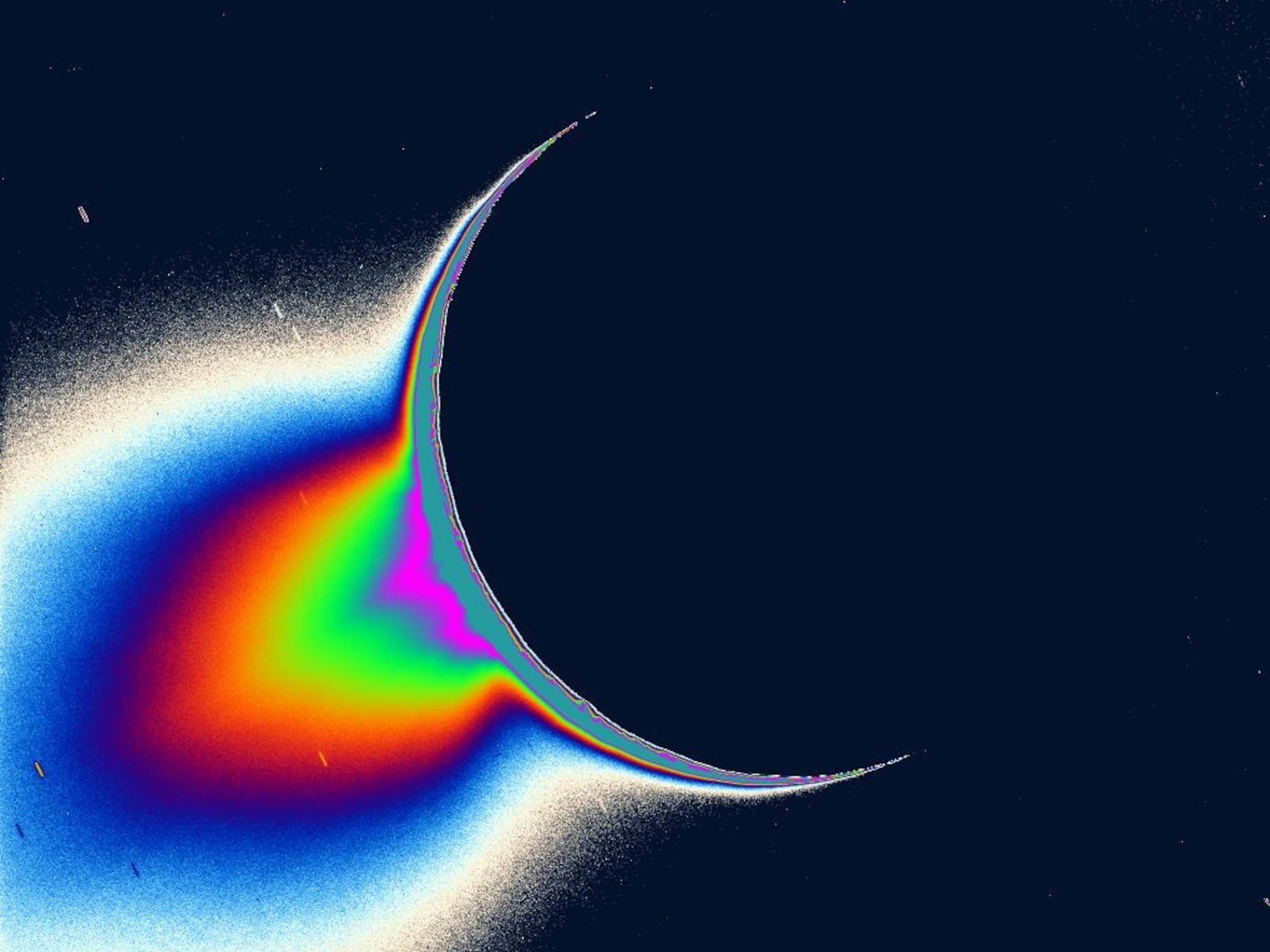
Russia Launches Mission to Mars Moon; Probe to Send Back Dust
Phobos-Grunt spacecraft is first Russian Mars shot since 1996.
Twenty-first time's the charm?
After 20 failed missions to Mars and no attempts since 1996, Russia today launched a new, ambitious project—not to Mars, but to one of the red planet's moons.
Funded by the Russian space agency Roscosmos, the Phobos-Grunt mission successfully lifted off on a Zenit-2SB booster rocket at 3:16 p.m. ET from the Baikonur Cosmodrome in Kazakhstan. The craft is slated to reach Mars in the fall of 2012.
(Also see "Next Mars Rover Landing Site Named: Gale Crater.")
Phobos-Grunt will then land on the 13.8-mile-wide (22.2-kilometer-wide) moon Phobos in early 2013. (See Phobos pictures.)
The craft will scoop up half a pound (0.2 kilogram) of the small moon's surface material—grunt is the Russian word for "soil"—for return to Earth. The main body of the lander will remain behind to conduct further research.
"We want to study the characteristics of the Martian satellites and understand their evolution," said Alexander Zakharov, Phobos-Grunt's lead scientist. "The origin of the Martian satellite system may give a clue to the formation of satellite systems of the other planets."
Probe Carrying Hitchhikers to Mars
In addition to its own instruments, the craft is carrying a few hitchhikers: A Chinese-built Mars orbiter, Yinghuo-1, will detach from Phobos-Grunt upon arrival and spend two years studying Mars.
Meanwhile, a hockey puck-size canister of desiccated "extremeophile" bacteria and tiny animals known as water bears will accompany the spacecraft on its round-trip journey.
The canister was provided by the U.S.-based Planetary Society, which is hoping to learn whether life can survive beyond Earth's magnetosphere, which protects the planet from damaging solar and cosmic radiation.
(Related: "Alien Life Can Survive Trip to Earth, Space Test Shows.")
"We've got all three domains of life [bacteria, eukaryotes, and animals]" represented in the experiment, said Bruce Betts of the Planetary Society.
The species in the experiment—dubbed LIFE, for Living Interplanetary Flight Experiment—were selected for their hardiness and the fact that they've been extensively studied here on Earth.
"So it'll be a nice comparison" to study the creatures post-flight, Betts said.
(Related: "Viking Mission May Have Missed Mars Life, Study Finds.")
Probing the Origins of Mars's Moons
The primary Phobos-Grunt mission will help scientists learn about the origin of both of Mars's moons, such as whether the oddly shaped Phobos and Deimos are asteroids that were captured by Mars's gravity or if they are remnants of impacts on Mars.
Both of Mars's moons are thought to be similar, so studying one will provide information about both.
Landing on the larger Phobos is technically easier, Maxim Martynov, project chief at the aerospace company that built Phobos-Grunt, told Russia's state-owned news agency.
(Related: "Yuri Gagarin-First Human Space Flight in Pictures.")
But that doesn't make the mission a cakewalk: Once the probe successfully blasts off and reaches Phobos, it will have to land on an area of the moon that has been seen only from far away, via images with a resolution of several meters per pixel, mission scientist Zakharov said.
"For landing of the spacecraft, we need better resolution," so the landing site will be imaged from the Phobos-Grunt craft while it's in orbit near the moon's surface.
Phobos "Soil" to Return to Earth?
If all goes as planned on Phobos, the return capsule carrying a surface sample will separate from the craft up to a week after landing.
The capsule must reach 22 miles (35 kilometers) an hour to leave the moon's surface, so to protect the scientific instruments left behind, the capsule will be vaulted into space by springs before firing its thrusters.
Upon reaching Earth in summer 2014, the capsule will slam into the Sary Shagan test range in Kazakhstan at 67 miles (107 kilometers) an hour, performing its landing without the aid of parachutes.
"It's a very challenging mission no matter who tries to do it," the Planetary Society's Betts said. "We're hopeful, but you can't be in this business and not recognize the risk of all missions, especially challenging ones."
Scientifically speaking, it's worth the effort, according to mission scientist Zakharov: "Analysis of extraterrestrial matter in well-equipped laboratories on Earth provides unique scientific data, which is impossible to get in in situ experiments."
And if Phobos-Grunt's equipment works well, the lessons learned could be applied to retrieving samples from Mars itself. That goal, Zakharov said, "has to be in the next decade."





